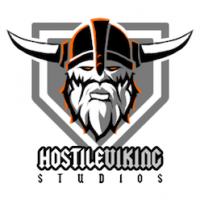Multiplayer Co-Op Beat-Em Up
Alright, so, Background: One of my favorite modern series is the Batman: Arkham series, with it's super slick super fluid melee combat with plentious options and strategic challenges to match those options and a rewarding rating system and room for expansion to a really great variety and mix of enemy types. One of my biggest wishes from that series would be going back to back with a friend as Batman/Robin/whoever and waylaying a group of foes together in massive and visceral combos. They decided not to go that route, though we did see shades of what could have been in Arkham Knight and Arkham Origins. While that series may not have gone the multiplayer direction, it does seem like current-gen evolution of the multiplayer beat-em-up gameplay that I fondly remember from Double Dragon, Battletoads, Streets of Rage or the TMNT, X-Men or Simpsons Coin-op games, and that kind of camaraderie is worth it's weight in gold, as far as I'm concerned.
The Challenge:
So, taking a rhythmic beat-em-up game and expanding it into multiplayer presents three pretty significant problems, that I'm aware of:
1) Part of what makes these things work is synching up animations. When you are in the midst of a move, the computer is free to quicken or lengthen the animation in order account for distance between the player character and enemies. In the cases of counters, enemies are often locked in to reaction animations that the player's animation is dependent on. A crucial challenge comes up when we open the option of another player to attack one of these foes. What happens when the target you're launching towards is already down. Your character now needs an alternate option, maybe multiple for multiple-person take downs. Now the number of animations to create has at leasted doubled, as you need interupt animations for if the player is struck mid-attack, as well as if the target is struck mid attack. More importantly, the player then has the frustration of having another player mess up their moves. Whatever they were planning, done.
2) The amount of attackers and attacks on screen to keep 2-4 people busy is a lot more than it takes for 1 player. This amount of visual information can get messy very quickly as more and more characters are flying across the screen, slowing things down for finishing moves, receiving counter triggers who it may not be clear where they are directed if two characters are standing close together. Suddenly even audio cues of an enemy being downed aren't clear anymore. It's easy for all the hits to start to come off as noise in this kind of scenario.
3) The old style of co-op is out of style and not marketable in the same way. Companies do not profit, and thus do not invest, the same way if they are selling one game to two players instead of one game to each player. Same screen co-op not only doesn't fly with the marketing department, but now you're creating a full multiplayer map infrastructure instead of just sharing a screen.
My solution:
Re-conceive of the two-player beat-em-up as if the two characters are really just one character in two different bodies.
Instead of processing inputs from two different characters as two separate entities that must be parsed, synced, collated or otherwise integrated during execution somehow, process the button presses as a combo in and of itself. In many cases, this may look the same as two separate entities doing unrelated things, however, if processed as a combo, that means simultaneous attacks are understood to strike at the same time, and the animations are then aligned in such a way that they happen simultaneously. The visual and audio cues work together in harmony like a symphony instead of creating destructive noise.
This solution also makes the idea of interrupts very fluid, the 'move' being performed is never based upon a single player's inputs, but on multiple players' inputs. Interrupts are handled as additional moves onto the "combo" and thus never start or effect independent of the move already in mid-motion. This can be driven home with a shared 'combo meter' and score, and the ability of either or both characters to counter any attack thus 'watching each other's backs' or 'doing kewl team up moves.' This of course doesn't resolve the issue of the pure amount of visual information that needs to be communicated, as what you've essentially done is created an immense combo system, which brings with it a number of it's own design challenges in terms of balance and choice and further, communication with the other player as far as how to handle things though perhaps with enough pressure, player actions will be communications in and of themselves.
In addition to increasing the pace/tempo in order to allow actions to communicate to other players each player's intent with or without voice or emote communication, the increased amount of options for the group necessitates a lack of options for the solo character, in fact, instead of one character with four combat gadgets, and four special attack options, you essentially have four characters who each only have one. You could even parse it out further into 'roles' such as one character who has the stuns, another who has range, another who has a blade to counter blade weapons or some other similar set of specializations so that special attacks may require the countering or focus of a particular member of the group. In short, each individual player's combat would be simplified, at least during initial entries. Alternately ranking of specialties may also be involved as one character may be faster, another stronger, another balanced. If more characters are available than number of co-op players, then choosing characters can in a way be building a fighting machine together. Depending on how these specialties are done this kind of multiplayer system can be extended to more than 2 characters.
This does not directly address challenges in implementing this for any kind of 'boss battle' that is based on something other than fighting hordes of mooks, but by designing bosses as highly intense/specialized mooks, you can actually create some really cool boss sequences, I think, as opposed to the typical 'room-as-boss' where the boss is for varying reasons a part of a wall or varied hot-spots in the environment. This also does not necessarily address the challenges in any kind of 'predator mode' multiplayer, though those challenges were largely addressed in Arkham Origins, and could be iterated upon in a specifically Batman-like game. This multiplayer solution is more open ended, and could be used for a Ninja Turtles adaptation, and Streets of Rage resurrection or an entirely original property.
Example Implementation:
Title: "Beatdown Bonanza"
Story: The city has been overrun by a martial-arts obsessed organized crime association "RONIN". They've detonated every explosive in the city, bullets included, and have the entire city in a grip of terror. It's up to our heroes, a disgraced cop and a local martial artist, to put things back right, and no army is going to stand in their way for long...
Tone: Lots of attitude and character-infused martial arts, grounded in actual martial arts maneuvers but not in the blood and pain that would naturally accompany such moves. Think Avatar: The Last Airbender or the old school Streets of Rage.
Basic Combat: Players have the ability to move, dodge via jump/tumble, attack, counter and special attack based on their particular character's abilities. They are then presented with enemies who are generally also humanoid who attack them in various melee and limited mid-range attacks. Players are able to dodge or counter incoming attacks, where dodging allows them freedom, and countering gives them a gauranteed attack while locking them down as enemies are able to re-position. Special attacks and attacks are similarly balanced where special attacks have some added feature and drawback, such as Max's grabbing opens up body slam moves, but also roots you like countering for the duration of the move. If the game is played solo, an AI partner is provided, and jump-in multiplayer is encouraged.
Sample Player Characters:
Max: Cop trained in MMA, hotheaded, stronger and slower, but great for stunning, grappling and throwing enemies. Also possesses a rechargeable stun gun to use at range.
Sakura: Kung Fu master and instructor, cool and calm, very fast and great at long combos and creating/closing distance. Can use melee weapon to block and counter melee weapons.
Javion (Unlockable): College Student and Capoeria practitioner, nerdy jokester, sweeping attacks strike multiple people at once, and can 'trigger' electronic devices with computer skills.
X (Unlockable): Masked former RONIN. Uses downed enemy weapons to duplicate their special abilities. Always carries a bat with a chargeable attack as a baseline weapon.
Sample Tutorial:
- Players cross the bridge into the city and fight past low level RONIN wannabes.
- Players learn to take down enemies separately, as they would expect. They are given space to play with this idea.
- Players learn how to attack a single enemy together and get to play with attacking together for cool combo moves, establishing their communication pattern and experiencing their unity in a very concreted and immediate way.
- Players are put into situations where one player is prompted to click first by proximity, thus defining the combo, then in a situation where the other player is prompted to click first, resulting in a different move to help see the interdependence. Moves are not radically different to preserve feeling of control, but the idea of taking turns for control is communicated. They are then given a space to play with this idea.
- Players are then put into counter situations where they learn they can counter together for more effect. Players learn that some enemies have shorter counters than others.
- Players are put in positions where one is unable to counter and the other is so that they can see that one person can counter for both, these positions are, of necessity, reversed and both players get to experience this.
- Players are put into a mixed combat situation, and introduced to their first special enemy: the acrobat, who counters everything except simultaneous attacks and counters. The numbers push for all of their new (basic) abilities to be tested.
- Players are introduced to their first boss, a Karate Master, who counters counters back and forth endlessly, and essentially can only be hit while he is countering. This means that the players must occupy him with counters, so that the other player is able to attack him from the other side, and score a combo, at which point Karate Master then focuses on that player, who must counter back and forth with him so the other player can strike. After a few rounds of this, he falls and helps kick off the story proper.
From there the game explores a number of environments and bosses reminiscent of those old beat-em-ups.
Questions:
1) Are there any challenges in doing multiplayer beat up combat in this way that I've overlooked?
2) Does the solution actually address the challenge?
3) Is there a better way to set up a tutorial to bring players into the headspace the solution creates?









